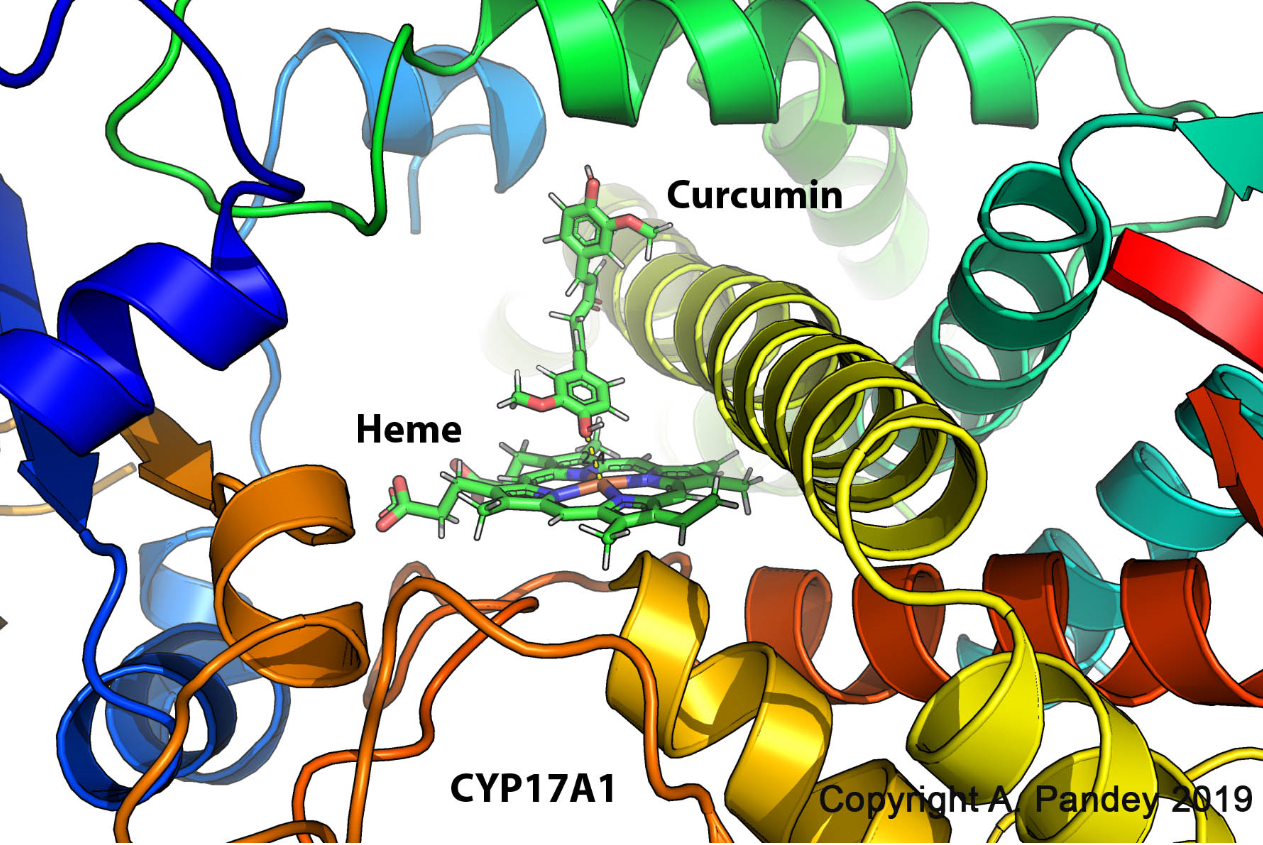Turmeric is a popular ingredient in the cuisine of many Asian countries. Turmeric is known for its use in Chinese and Ayurvedic medicine and comes from the roots of the Curcuma longa. Turmeric is rich in curcuminoids, including curcumin, demethoxycurcumin, and bisdemethoxycurcumin. Curcumin has potent anti-inflammatory and anti-carcinogenic activities. Since many anti-cancer drugs target enzymes from the steroidogenic pathway, we tested the bioactivity of curcuminoids on cytochrome P450 CYP17A1, CYP21A2, and CYP19A1 enzyme activities. Curcuminoids were extracted from turmeric with organic solvents. We conducted a cell-based assay for CYP17A1 and CYP21A2 activities using human adrenal cell line NCI-H295R. 3H-pregnenolone was used for CYP17A1 assays, and 3H-17alpha-hydroxyprogesterone was used as a substrate for CYP21A2. Curcuminoids were added at different concentrations and incubated for 24h. Steroids were separated by thin layer chromatography and analyzed by phosphorimager analysis. For CYP19A1 activity, an in vitro assay using endoplasmic reticulum from JEG3 were used with 3H-androstenedione as the substrate. Curcuminoids were incubated for 1h, and the formation of 3H-water from the androstenedione breakdown was measured by scintillation counting. When using 10 µg/ml of curcuminoids, both the 17-hydroxylase as well as 17,20 lyase activities of CYP17A1 were reduced significantly. On the other hand, CYP21A2 activity was only reduced to ~50% control. Furthermore, CYP19A1 activity was reduced to ~20% of control when using 1-100 µg/ml of curcuminoids in a dose-dependent manner. No effect on the activity of 5alpha reductase for the conversion of androstenedione to androstanedione was observed. Molecular docking studies confirmed that curcumin could dock into the active sites of CYP17A1, CYP19A1 as well as CYP21A2. In CYP17A1 and CYP19A1, curcumin docked within 2.5 Å of central heme while in CYP21A2 the distance from heme was 3.4 Å, which is still in the same range or lower than distances of bound steroid substrates. These studies show that curcuminoids may potentially cause inhibition of steroid metabolism, especially at higher dosages. The activities of CYP17A1 and CYP19A1 were inhibited by curcuminoids, which indicate potential anti-carcinogenic effects in case of prostate cancer as well as breast cancer, which can be targeted by inhibition of steroidogenesis. Also, the recent popularity of turmeric powder/curcumin as a dilatory supplement needs further evaluation for the effect of curcuminoids on steroid metabolism. Curcuminoids present in curcumin may affect activities of multiple steroid metabolizing cytochrome P450 enzymes. Computational docking suggests curcumin binds into the active sites of steroid metabolizing P450s and may serve as a model for lead discovery. Molecular structure of curcuminoids could be modified to generate better lead compounds with inhibitory effects on CYP17A1 and CYP19A1 for potential drugs against prostate cancer and breast cancer.

